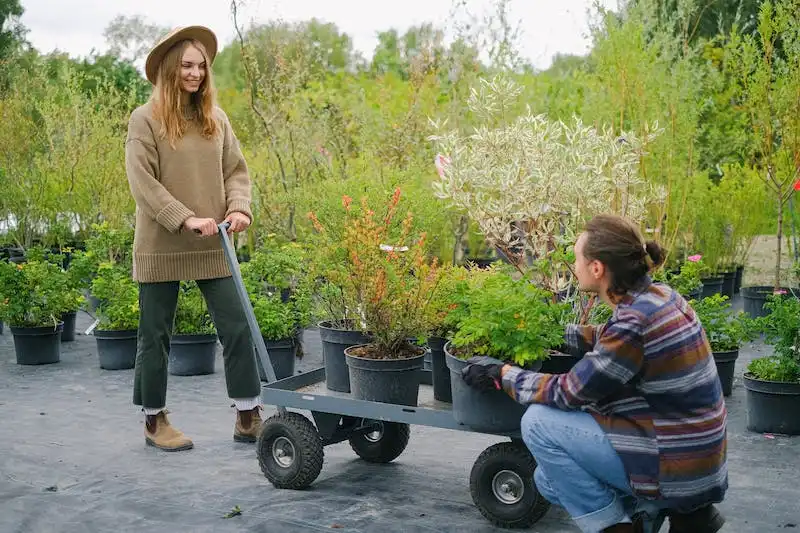Do you notice that your houseplants sometimes droop or wilt, despite your best efforts to care for them? If so, you’re not alone. Many plant owners encounter this problem, and it can be frustrating to see your beloved greens looking sad and wilted. However, understanding the reasons behind drooping houseplants and learning how to revive them can help you prevent this issue and ensure your plants stay healthy and vibrant.
One of the main causes of drooping houseplants is incorrect watering technique. While some plants prefer to have their soil consistently moist, others may not tolerate excessive moisture. Overwatering, or letting the roots sit in water for too long, can lead to root rot and poor oxygen transport within the plant. On the other hand, underwatering, or allowing the soil to dry out completely, causes the plant to wilt and can damage the cell structure. It’s important to find the right balance and learn how often and how much to water your specific plants.
Environmental factors also play a significant role in the health of your houseplants. Low humidity levels, especially in heated or air-conditioned spaces, can cause the leaves to lose moisture quickly, resulting in drooping or wilting. Additionally, exposure to direct sunlight or extreme heat can cause stress and damage to some plants. Providing adequate shade or moving your plants away from intense sunlight can help prevent drooping caused by excessive heat.
Dust accumulation on plant leaves can also affect their ability to absorb sunlight, leading to wilt. Be sure to regularly dust your plants’ leaves with a soft cloth or sponge to keep them clean and allow maximum sunlight absorption. Furthermore, some plants, like figs and peace lilies, benefit from an occasional misting to increase humidity around the leaves.
If you’ve already identified the cause of your plant’s drooping, the solution may be as simple as providing the appropriate care. Adjusting your watering routine, increasing humidity levels, or finding a more suitable location for your plant can often revive drooping plants. However, it’s important to address the issue as soon as you notice it, as prolonged drooping can have more severe consequences for the plant’s health.
By understanding the various factors that can cause drooping in houseplants and learning how to prevent and revive them, you’ll be better equipped to keep your plants looking their best. In this guide, we’ll explore the different reasons why drooping happens, the signs to look out for, and the steps you can take to revive your droopy plants. With the right care and attention, you’ll be able to enjoy healthy, thriving houseplants that add beauty and life to your home.
Drooping leaves
One of the most common problems faced by houseplant owners is drooping leaves. If you’ve ever come home after a few days away and found your once perky plant looking droopy, it’s likely due to a lack of water.
Plants, like all living beings, need water to survive. Just like humans, they rely on water to transport nutrients and maintain their balance. When a plant doesn’t receive enough water, its leaves will wilt and droop. This wilting happens because the lack of water prevents the cells within the leaves from remaining perky and turgid. Instead, they become limp and the plant appears lifeless.
There are several causes for drooping leaves, and one of the most common is incorrect watering technique. Sometimes, we water our plants too much, leading to waterlogged roots that can’t transport nutrients effectively. Other times, we forget to water them at all, causing the plant to become dehydrated and wilt.
Environmental factors also play a role in leaf drooping. Certain plants, like evergreens and figs, are more sensitive to changes in their environment and may droop if exposed to low humidity or harsh conditions. Dusty leaves can also prevent a plant from getting enough sunlight, leading to drooping.
To prevent drooping leaves, make sure you understand the watering needs of your plants. Some plants, like pothos and snake plants, prefer to dry out completely before being watered again, while others, like peace lilies and ferns, need consistently moist soil. A good rule of thumb is to check the soil with your finger. If it feels dry up to the second knuckle, then it’s time to water.
In addition to regular watering, it’s important to provide your plants with proper humidity. If you live in a dry climate or have your plants near a window or heating source, consider using a spray bottle filled with water to mist the leaves and increase humidity.
If you notice that your plant’s leaves are drooping, don’t panic. There are several steps you can take to revive your plant. Start by giving it a thorough watering, making sure the water reaches the roots. If the drooping is caused by environmental factors, like low humidity or dust, gently wipe the leaves with a damp cloth or use a soft brush to remove any dust buildup. This will help the plant better absorb sunlight and nutrients.
By learning how to identify the causes of drooping leaves and taking the necessary steps to fix them, you’ll be able to keep your houseplants healthy and thriving.
Is it Wilting or is it Drooping
When your houseplants start to look less perky and their leaves start to sag, it can be confusing to determine whether they are wilting or drooping. While these terms are often used interchangeably, there is a subtle difference between the two.
Wilting is typically caused by a lack of water or excessive heat. When a plant is wilting, its leaves will become limp and droopy. This happens because the plant’s cells are losing water, which affects its ability to maintain turgidity. Wilting can also be a sign of root problems or environmental stress.
Drooping, on the other hand, is often caused by an imbalance of water in the plant. It can occur when a plant receives too much water or when it is not getting enough. Drooping plants will also have limp and wilted leaves, but the underlying cause is different. Drooping can be temporary and easily fixed, while wilting can be a more serious issue.
To determine whether your plant is wilting or drooping, you can try the hydrogen peroxide test. Mix one tablespoon of hydrogen peroxide with one cup of water and pour it onto the plant’s soil. If the roots are healthy, they will fizz and bubble. If the roots are damaged or rotten, they will not react. This simple test can help you identify the problem and take appropriate action.
If your plant is drooping, you can revive it by adjusting its watering schedule. Make sure to water it evenly without overwatering or underwatering. Consider using a moisture meter or sticking your finger into the soil to check for moisture levels. Additionally, make sure the plant is placed in a suitable environment with proper humidity and sunlight exposure, as these factors can also affect its hydration.
To prevent drooping or wilting in the first place, it’s important to learn how much water and sunlight your specific plant needs. Each plant has different requirements, so do some research or consult a plant care guide to determine the best care practices. Regularly inspect your plants for any signs of drooping or wilting, and take action promptly to address any issues.
Remember, houseplants can benefit from a misting with water to increase humidity, particularly if you have evergreens or lilies. Dusty leaves can also hinder water transport, so make sure to periodically clean the foliage to ensure proper hydration.
In conclusion, understanding whether your plant is drooping or wilting is crucial for proper care. While both conditions can be addressed, it’s important to identify the underlying cause to provide the appropriate solution. By maintaining an optimal balance of water, sunlight, and environmental conditions, your plants will thrive and remain healthy and vibrant.
Dusty leaves
Dusty leaves on your houseplants can be a common occurrence and can contribute to drooping. When dust collects on the leaves, it can block the pores, preventing proper transpiration and causing the plant to wilt.
To fix this issue, you’ll need to learn how to clean your plant’s leaves effectively. One easy technique is to gently wipe the leaves with a damp cloth or sponge. This will remove the dust and allow the leaves to breathe better.
It’s also essential to consider the environmental conditions in which your plants are living. Low humidity and insufficient sunlight can both contribute to drooping and dust accumulation. Ensure that your plants are placed in an area with adequate humidity and receive the appropriate amount of sunlight for optimal growth.
Another solution to prevent droopy and dusty leaves is to water your plants correctly. Overwatering or underwatering can both lead to wilting. It’s important to find the right balance and learn how often your specific plants need to be watered. Additionally, make sure that the water you use is not too cold, as this can shock the roots and cause drooping.
If you notice that your plant’s leaves are consistently dusty or wilted, it may be beneficial to periodically mist them with water. This can help to increase the humidity around the plant and keep the leaves perky. Be sure to use room temperature or slightly warm water when misting.
In conclusion, dusty leaves can contribute to drooping in houseplants. Cleaning the leaves regularly, providing the right environmental conditions, and watering correctly can all help to prevent droopy and dusty leaves. By following these tips, you can ensure that your plants stay healthy and vibrant.
Incorrect sunlight
One of the common causes of drooping houseplants is incorrect sunlight. Plants need the right amount of light to thrive, and if they don’t get enough or get too much, their leaves may droop.
Plants that prefer bright, indirect light may droop if they’re placed in a location with low light levels. On the other hand, plants that need shade or low light may wilt if they’re exposed to direct sunlight for too long. It’s important to know the specific light requirements for each plant species and provide the appropriate conditions.
An easy way to know if your plant is not getting enough light is by looking at the leaves. If they are pale in color and elongated, it’s a sign that the plant is reaching out for more light. Moving the plant closer to a window or providing artificial lighting can help resolve this issue.
On the contrary, if the leaves are yellowing or have brown spots, it may be a sign of too much light. In this case, moving the plant further away from direct sunlight or diffusing the light with sheer curtains or blinds can be beneficial.
It’s also essential to ensure that your plant is not getting too much heat along with direct sunlight. Heat can cause the plant to dry out quickly and lead to wilting. If your plant is near a heat source like a radiator, it’s best to move it to a cooler location.
If you notice dust on the leaves of your houseplants, it’s a good idea to clean them regularly. Dust can block sunlight from reaching the plant’s leaves and interfere with the photosynthesis process. Use a soft cloth or sponge to wipe the leaves gently, or you can also spray them with water to remove any dust build-up.
In conclusion, providing the right amount and type of sunlight is crucial for the overall health of your houseplants. Understanding the light requirements of your plants and making adjustments accordingly will ensure they stay perky and free from drooping.




